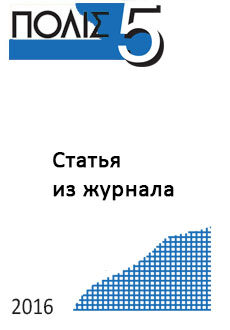Online shop of "Polis. Political Studies" Journal
We in the world, the world in us
Sharkov F.I. Visualization of Political Media Space. – Polis. Political Studies. 2016. No 5. P. 97-107 (In Russ.) .
Free!
Media space is a part of social space covered by means of mass communication. Social environment, saturated with visual images, gradually turns into visual space, and if controlled by visual mass media, it turns into visual media space. Visualization is, on the one hand, a tool for orientation in the world, and on the other hand, it is a means of representing the world, in other dimensions and projections. The media space, rich with political content, turns into a political media space, formed mainly by political stakeholders to influence the target segment − for example, the electoral audience. The media space produces the most effective political impact on people. This, in particular, explains the emergence of mass society, which is dominated by the average perception of the familiar world of images, which saturated the world. Today, a strong system of mass communications exists, which affects human behavior. If earlier, less rigid stratification dominated in society, the blurring of its boundaries shows the development of “mass man” society. In this society, elite gets less recognizable as it is mixed with the crowd. Political competition and one-sidedness, poor information culture of those who produce visual content seriously distort the media space environment. Therefore, visual informaiton that is associated with aggression, violence, killings of civilians by Ukrainian military in the southeastern Ukraine, dominates on TV screen. Visualization of media space by various means, described in this article, can become a powerful tool of political influence.
 English
English Русский
Русский

Reviews
There are no reviews yet.